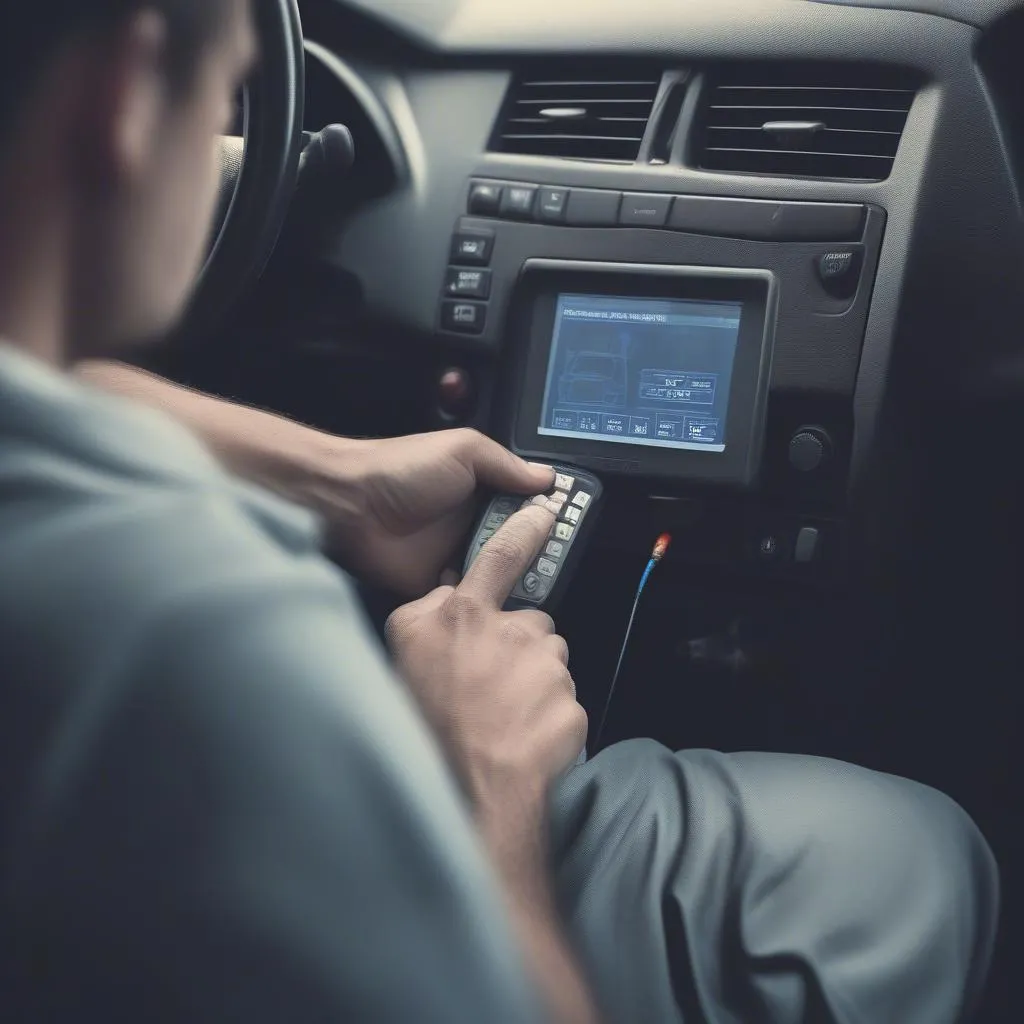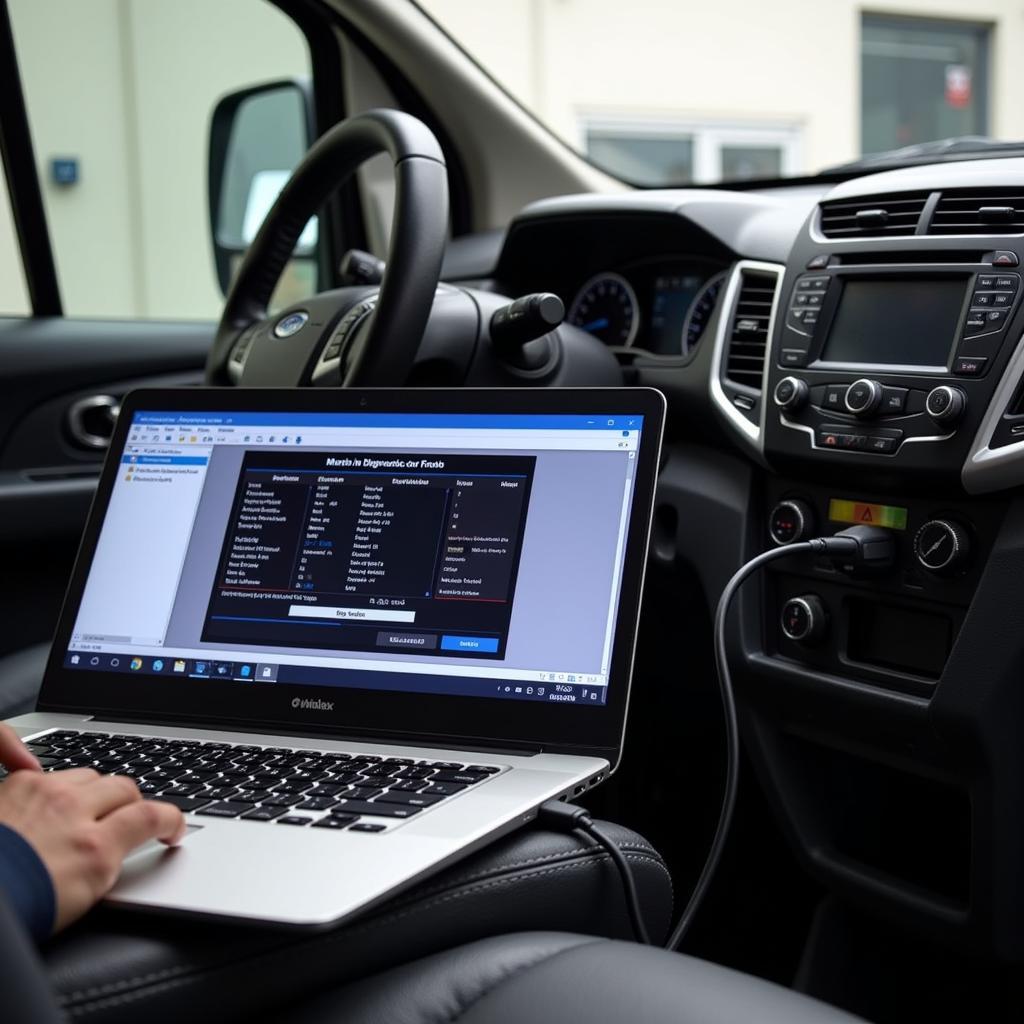Experiencing car troubles is never ideal, especially when your vehicle’s anti-theft system is acting up. An overly sensitive anti-theft system can prevent your car from starting, leaving you stranded. This guide provides a step-by-step approach to help you understand, diagnose, and potentially disengage your car’s anti-theft system.
Understanding Your Car’s Anti-theft System
Before diving into solutions, it’s crucial to understand why your anti-theft system might be malfunctioning. Common culprits include:
- Weak or Dead Car Battery: A low battery can disrupt the signal between your key fob and the vehicle’s computer, triggering the anti-theft system.
- Faulty Key Fob: A damaged key fob or one with a depleted battery may not transmit the correct signal to disable the immobilizer system.
- Malfunctioning Ignition Switch: Problems with the ignition switch can disrupt communication with the car’s anti-theft system.
- Issues with the Immobilizer System: The immobilizer system itself may have issues, requiring further diagnosis.
Recognizing a Potential Anti-theft System Problem
Several tell-tale signs indicate a potential issue with your car’s anti-theft system. These include:
- Engine Cranks but Won’t Start: If your engine cranks but refuses to start, it’s a strong indicator of a possible anti-theft system issue.
- Rapidly Flashing Security Light: A rapidly blinking security light on your dashboard often signals an activated anti-theft system.
- Clicking Sounds When Starting: Unusual clicking noises during startup attempts might suggest an immobilizer problem.
Essential Tools for Diagnosing and Addressing the Issue
Having the right tools is crucial for effectively diagnosing and potentially fixing anti-theft system problems. These tools can range from basic to more advanced:
- Voltage Meter: A voltmeter helps check your car battery’s voltage to rule out a weak battery as the culprit.
- Spare Key Fob: Trying a spare key fob, if available, can help determine if the issue lies with the original fob.
- Code Reader: A code reader can retrieve diagnostic trouble codes (DTCs) stored in your vehicle’s computer, pinpointing the root of the problem.
- Software for Remote Diagnostics and Programming: In some cases, advanced diagnostic software can help diagnose and even resolve issues with your car’s anti-theft system remotely.
 Diagnosing Car Anti-theft System Issues
Diagnosing Car Anti-theft System Issues
Troubleshooting Steps: How to Disengage Your Anti-theft System
Before attempting to disengage the anti-theft system, remember that the exact steps may vary depending on your car’s make, model, and year. Always consult your vehicle’s owner’s manual or seek professional assistance if needed.
- Check Your Car Battery: Begin with the basics. Use a voltmeter to ensure your battery has sufficient voltage. If it’s low or dead, jump-start your car or replace the battery if necessary.
- Inspect Your Key Fob: Examine your key fob for any visible damage and ensure the battery is working. Try using your spare key fob to start the car.
- Perform a Key Fob Resync: Consult your owner’s manual for instructions on resyncing your key fob to your vehicle. This process often involves a specific sequence of button presses or ignition cycles.
- Inspect the Ignition Switch: If the key doesn’t turn smoothly in the ignition or feels loose, there might be a problem with the ignition switch itself. Contact a professional mechanic to diagnose and repair any ignition switch issues.
- Use a Code Reader: Connect a code reader to your vehicle’s OBD-II port to retrieve diagnostic trouble codes. These codes provide valuable insights into the anti-theft system’s status and potential malfunctions.
 Diagnose Anti-theft System with Code Reader
Diagnose Anti-theft System with Code Reader
FAQs: Addressing Common Concerns
Can a locksmith disable my car’s anti-theft system?
Yes, qualified automotive locksmiths often possess the tools and knowledge to disable or reprogram certain anti-theft systems. However, it’s crucial to contact a reputable locksmith specializing in automotive services. You can learn more about the role of locksmiths in handling anti-theft systems in our article, Can a Locksmith Fix Anti-Theft System?.
My Acura TL (1999) anti-theft system is acting up. What should I do?
Troubleshooting anti-theft issues in older models like a 1999 Acura TL can be tricky. We have a dedicated guide on how to disengage the anti-theft system in a 1999 Acura TL. You can find the guide here: How to Disengage Anti-theft System in a 99 Acura TL.
Are there specific guides for disengaging anti-theft systems in Honda Odyssey or Ford Mustang?
Yes, we offer model-specific guides for disengaging the anti-theft system in various vehicles. You can check out our articles on:
These guides provide tailored solutions based on the specific make and model of your car.
Remember that attempting to bypass or permanently disable your anti-theft system without proper knowledge can have serious consequences, including potential damage to your vehicle’s electrical system or even legal ramifications.
If you’re unsure about any step or continue to experience issues, it’s always recommended to seek assistance from a qualified automotive electrician or your dealership’s service department. Advanced diagnostic tools and software, like those offered by CARDIAGTECH, can be invaluable in these situations, providing remote diagnostics, programming, and potential solutions for your car’s anti-theft system issues.

